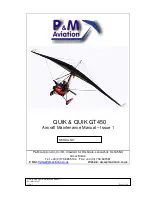
Page 4
Automatic fl ight stabilization / AFS
With the AFS-system U-Turn provides an innovative feature. To fl y safely means to fl y actively - the sys-
tem employed on the U-Turn ALPINE PEAK 2 allows this to happen automatically to a certain level. The
secret of the AFS-system is based on a pre-tensioning principle. In the are of the brake attachment
points the undersurface is pre-tensioned. Whilst the sail is gliding through smooth air, there is enough
pressure inside and the pre-tensioning is neutralized: The eff ect of internal pressure is more powerful
than the pre-tensioning and the trailing edge stays aerodynamically perfect in the air like a conven-
tional glider. When entering turbulent air with the ALPINE PEAK 2 the system adjusts immediately, even
the slightest drop of internal pressure allows the system to react. The pre-tensioning at the trailing edge
is eff ectively like pulling the brakes.
Ernst Strobl recalls the fi ne-tuning: “Our computer-based calculations were impressivel confi rmed dur-
ing our tests”. The system is extremely responsive so that a top-qualtiy manufacturing is key. U-Turn
Cofounder Thomas Vosseler adds: “We guarantee a strongly supervised manufacturing process.”
The AFS works like the Electronic Stability Programs known in the automotive industry, you could call
it an “ESP for the air”. It intervenes for the benefi t of safety when an inexperienced pilot, or a pilot in
trouble, enters turbulence and is unable to fl y actively. Experienced fl ight-instructors confi rm: “This is a
major step as far as safety is concerned. The main reason for accidents, the full collapses of the canopy,
is minimized dramactically”. Even without AFS the U-Turn ALPINE PEAK 2 would be a very safe glider says
Strobl. Due to the extremely pulled down wingtips and the resulting spread of the wingloading the U-
Turn ALPINE PEAK 2 has far more than average resistance to collapses. The U-Turn ALPINE PEAK 2 gliders
stably ahead even after an accelerated asymmetric collapse, a situation that may happen after leaving
a thermal, even with 50% of the wing collapsed. This is unprecedented. The computer optimised wing
layout leads to very good thermal lift and maximizes the stall characteristics, both improving safety.









































